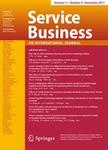版权所有:内蒙古大学图书馆 技术提供:维普资讯• 智图
内蒙古自治区呼和浩特市赛罕区大学西街235号 邮编: 010021

作者机构:Univ Porto Fac Engn Rua Dr Roberto Frias P-4200465 Oporto Portugal
出 版 物:《SERVICE BUSINESS》 (Serv. Bus.)
年 卷 期:2017年第11卷第4期
页 面:831-849页
核心收录:
学科分类:0821[工学-纺织科学与工程] 1202[管理学-工商管理] 1201[管理学-管理科学与工程(可授管理学、工学学位)] 08[工学] 082104[工学-服装设计与工程]
主 题:Direct marketing Response modelling Customer targeting Random forests Class imbalance
摘 要:Customers response is an important topic in direct marketing. This study proposes a data mining response model supported by random forests to support the definition of target customers for banking campaigns. Class imbalance is a typical problem in telemarketing that can affect the performance of the data mining techniques. This study also contributes to the literature by exploring the use of class imbalance methods in the banking context. The performance of an undersampling method (the EasyEnsemble algorithm) is compared with that of an oversampling method (the Synthetic Minority Oversampling Technique) in order to determine the most appropriate specification. The importance of the attribute features included in the response model is also explored. In particular, discriminative performance was enhanced by the inclusion of demographic information, contact details and socio-economic features. Random forests, supported by an undersampling algorithm, presented very high prediction performance, outperforming the other techniques explored.